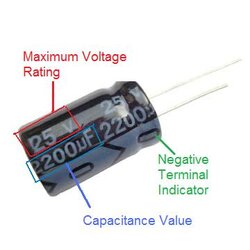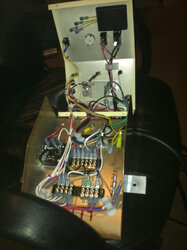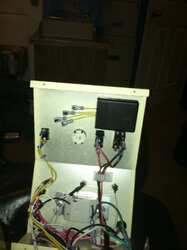Made some good strides this evening on the "Box"
The other day I scarfed up a cool little plastic case to house the resistor pack.
Carved a hole in the end for the wires and squirted in some black RTV to secure the PCB and snapped the cover back on.
A strip of double side tape and the "Widdle box" is all secure in the panel.
In the piccy you can see the back of the rotary switch with its tabs showing.
Just have to make up the 4 wires to solder to the 3 on top and the one directly below them (Common terminal)
A spade on each wire and connect the Low Med High to the 3 terminals on the resistor pack, then connect the common to the timer and also the common from the rotary switch to the timer.
Very minimal work left to get it completely tidy'd up in the new panel.
I found the little case at Fry's Electronics for a couple $$
I want to do another one of these units for the other stove, and add some mods that will be better suited to the larger stove.
A different resistor pack for a better feed/heat selection, and a control for the low temp snap switch cut off.
The Prodigy does not use a low temp cut off with a start timer, but rather an on/off switch.
The low temp switch simply allows the stove to be shut off and continue the draft fan until the thing is cooled off.
I prefer to shut off the fuel and keep the draft and room air blowers on til its cooled down, then shut it off.
The only down side is the lack of a fail safe in case of a misfire, but that's how they made the little baby Whit.

Always better the more times you do it.

Snowy








